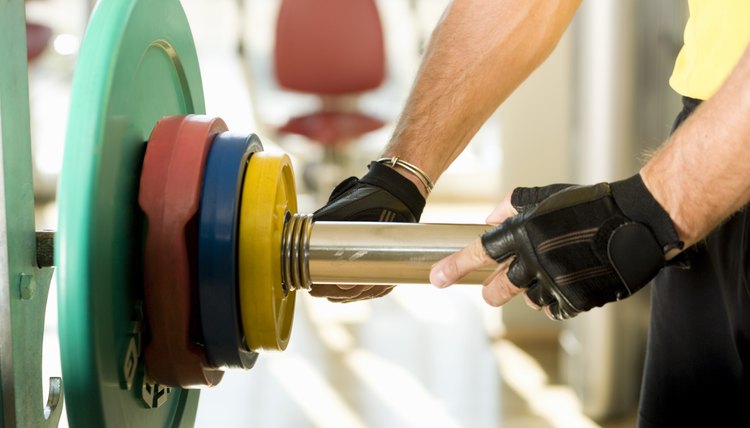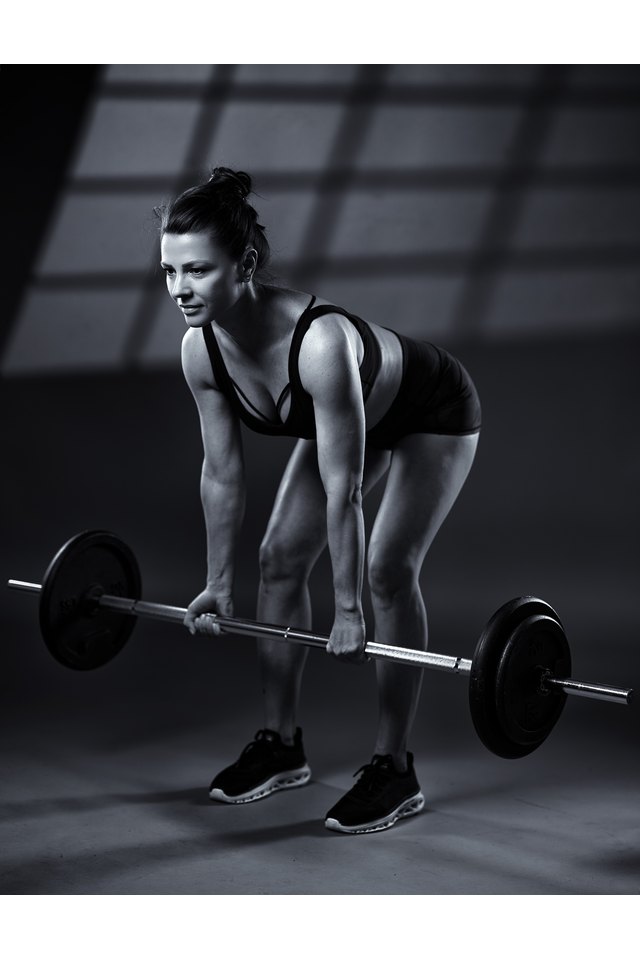What does fact checked mean?
At SportsRec, we strive to deliver objective content that is accurate and up-to-date. Our team periodically reviews articles in order to ensure content quality. The sources cited below consist of evidence from peer-reviewed journals, prominent medical organizations, academic associations, and government data.
The information contained on this site is for informational purposes only, and should not be used as a substitute for the advice of a professional health care provider. Please check with the appropriate physician regarding health questions and concerns. Although we strive to deliver accurate and up-to-date information, no guarantee to that effect is made.
The Differences Between Pendlay Rows & Barbell Rows

The pendlay row and barbell row are back exercises that are very similar, so much so that it can be hard to tell the difference between the two. The Pendlay row is named after Olympic weightlifting coach Glenn Pendlay. Among the key differences, your back is more horizontal during a Pendlay row and you set the weight down after completing each of the reps. Here are some of the major differences between the Pendlay row and Barbell row variations.
What is the body position for Pendlay row vs Barbell row?

IT Stock/Polka Dot/Getty Images
For the Pendlay and standard barbell row, stand in a starting position similar to a deadlift with your feet about hip-width apart and your knees slightly bent. Hold a barbell in front of your thighs. During the Pendlay row, your back is parallel to the floor and your hips are at a 90-degree angle. Do not round your lower back. During a regular barbell row, your back is more upright. The angle varies, but the American Council on Exercise recommends positioning yourself in a 3/4-upright position. This places your back at a 45-degree angle to the floor.
What is the Grip for Pendlay row vs Barbell row?

IT Stock/Polka Dot/Getty Images
You take a wider grip on the barbell for the Pendlay row. For a regular row, grab the bar just outside your knees with an overhand grip or underhand grip. For the Pendlay row, your grip is wider than shoulder-width; however, the exact grip will vary for each lifter. Grip the bar at the appropriate place to keep your body in the proper alignment. Set your feet and position your back so it is parallel to the floor. Grab the bar at the place where your arms are fully extended, but your elbows are not completely locked out.
How do you do pendlay row vs barbell row?
For the Pendlay row, pull the bar into your upper abs or lower chest. Reverse the movement and set the bar on the floor after each repetition. Perform the exercise quickly and with explosive power, but do not be sloppy. It is best to use lighter weight here to prevent injury and foster proper form. For a regular row, the range of motion moves downwards. You must pull the barbell into your lower to middle abdomen area, come to a dead stop, then slowly lower the bar until your arms are straight. Do not set the barbell on the floor until the end of the set. Perform the movement slowly and with control. It is best to use heavier weight in order to foster muscle activation and muscle growth in the muscles of the back.
What muscles does pendlay row work vs barbell row?
The Pendlay row and the bent over barbell row are rowing exercises that are good for building muscle in the back. The latissimus dorsi, or lats, the large back muscles that run down each side of your spine, are the main movers. Bodybuilders and fitness-minded individuals use the regular barbell row with heavy weight to increase back strength, back endurance and encourage hypertrophy in the back. Barbell row also does a great job strengthening other muscle groups such as your rhomboids, hamstrings, and erector spinae. Weightlifters use the Pendlay row to increase the strength and power of their upper back muscles. In addition, the shoulder blades and much of the upper body gets worked as well. It makes for a popular powerlifting exercise.
References
Writer Bio
Based in Austin, Texas, Jolie Johnson has been in the fitness industry for over 12 years and has been writing fitness-related articles since 2008 for various websites. She received her Bachelor of Arts in English and philosophy from the University of Illinois.
